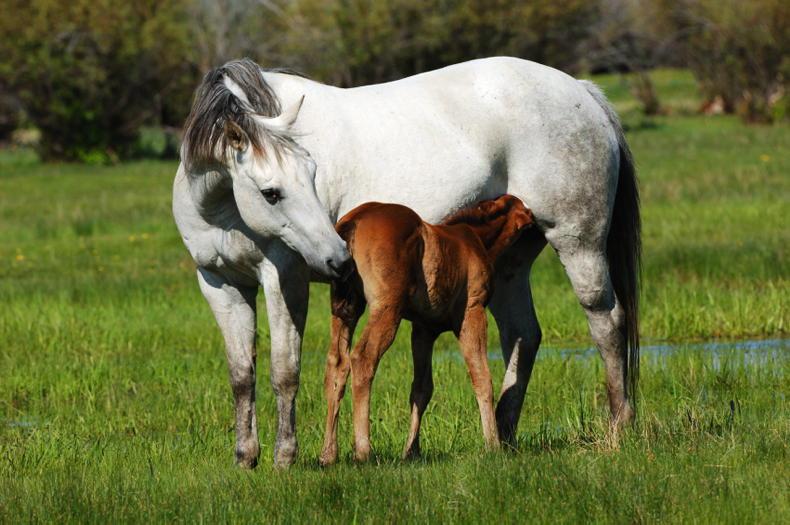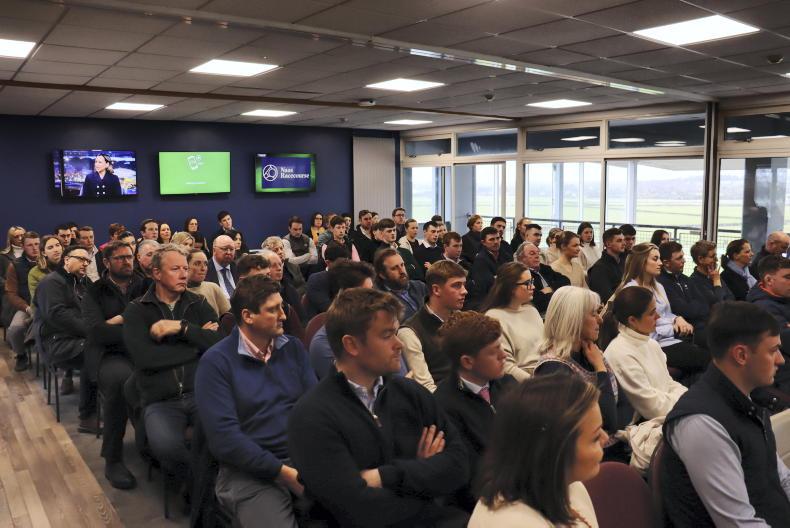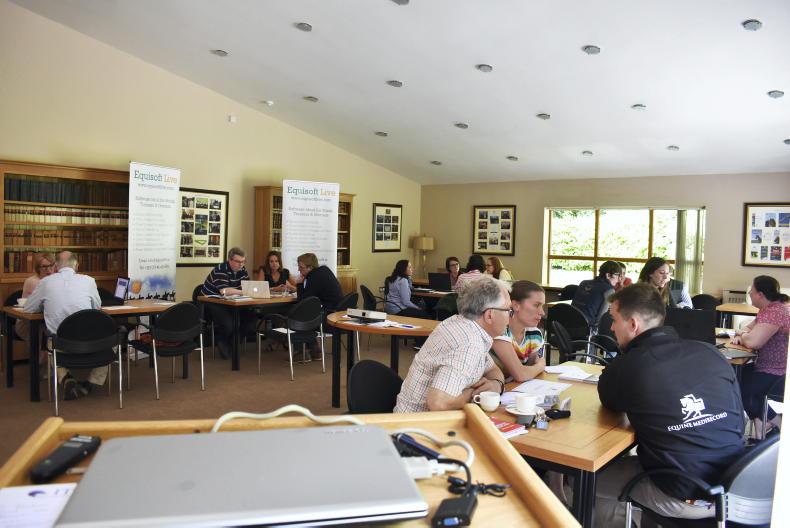THE Irish Thoroughbred Breeders’ Association [ITBA] filled the house before racing at the Curragh on Sunday with a well-attended seminar focusing on fillies and mares.
An impressive panel, chaired by Leo Powell, discussed the benefits to breeders of producing from mares with form.
A questions and answers session followed and those present had the opportunity to engage with industry stakeholders throughout the day. The seminar was followed by the South Leinster Breeders Recognition Awards.
First to respond to some insightful questions from Powell was Pat Downes, manager of Gilltown Stud. HH Aga Khan Studs breed to race and the retention and improvement of established families is vital.
The influence of foundation mare Mumtaz Mahal is still relevant a century on, highlighting the significance of preserving good families. “We are the custodians of a long tradition,” pointed out Downes. “We need to keep producing those fillies.”
Downes revealed: “We rely on the trainers an awful lot, the best example being how we came to keep Zarkava’s dam, Zarkasha, who never ran. John Oxx only ever got to do one piece of work with her, but he reported “I think she’s quite nice”. That was important information. The main decisions on keeping a mare are soundness, level of ability and most importantly how well they are represented in the book as a family. We try not to lose any family.
“We can look at stallions for longer than a commercial breeder. Even though he has been commercially downgraded we are still happy. We get most success from stallions who were best at 10 to 12 furlongs. Our aim is the production of a classic horse and the breeding pool is getting very narrow, which we all need to be aware of. There are very good middle-distance stallions who are not getting the opportunities.”
Fillies are cheaper
Trainer Jessica Harrington has enjoyed plenty of success with top class fillies and noted: “Mostly fillies are cheaper to get hold of and if they go wrong, they have another life after racing. When I started training, people weren’t buying fillies.
“I find owner-breeders all have the same plan, to win a race, then gain blacktype, then win a blacktype. They always want to keep families going. Sometimes a family goes cold for a couple of generations and then they take off again. As long as you’ve got the good taproot, they’ll get going again.”
At the sales, Harrington warned: “It’s a slight negative when the dam is unraced. Why was she not raced? I like the progeny of mares that have produced runners in their first two or three foals, as they are producing horses that are sound.
“Buying stores has a lot of the same principles as flat yearlings, a good-looking, well-moving animal who you always like. You’ve got to like them, your first impression is the right decision.”
Dermot Weld
Trainer Dermot Weld is another with a strong association with owner-breeders. He told the audience:“I’ve been very fortunate to have the opportunity to train such great families. It can be difficult to convince an owner to keep a filly in training, as prize money is low, particularly at listed level, but every filly is different.
“Committed was late developing, a reasonably good two-year-old and then twice champion sprinter of Europe, she got better with age. Tarnawa improved each year, but Tahiyra was champion two-year-old of Europe and won three Group 1s at three, so why keep going?”
Reiterating the conviction that a strong distaff pedigree will always come back after a couple of quiet generations, Weld cited the homebred Irish 1000 Guineas winner Nightime. “I bought her dam Caumshinaun because I liked her as an individual and was partial to Indian Ridge.
“Her pedigree wasn’t strong, but if you looked further back it had Group 3 winners and producers. It had just weakened for a generation or two, but you can always bring it back. At stud she bred nine runners and all nine were winners, transmitting her soundness. We try to buy into families with a good record of soundness.”
Leasing mares
This was underlined by Willie Mullins, who had only to list the many good mares he has trained and the successful offspring they have since bred. “It’s easier to buy mares and to acquire them, we leased Tourist Attraction, and you can get stock into your yard and have horses to train,” he said.
“To me, training National Hunt mares was not difficult or something that shouldn’t be done. They take lighter training than geldings and stay fitter, and take a little less feeding. Before the introduction of the mares’ programme and incentives, well-bred fillies weren’t given opportunities and were just sent straight to a stallion.
“National Hunt is still only catching up with flat racing, but we are now seeing far better mares in training. I’m incredulous to think there was pushback to it initially.
“I can encourage an owner to spend money on a well-bred filly, and if she goes wrong she still has value. We love mares with good pedigrees and plenty of stamina. When you look at the French stores you can go back two or three generations and all the dams ran. You can see soundness on the page even if there is no blacktype. We’ve trained crooked horses that have won, but I won’t forgive an oil painting with only one runner on the page.
“In Ireland very few National Hunt breeders like to put a filly in training. In France the prize money is good enough to race their mares at three, four or five as potential broodmares, and if they’re no good on the track they bin them. They have a quarter of the jumping population we have, and look at their success.
“Should we change our system to bring in more three-year-olds? The programme makes that very difficult and if we change our system we’ll have neither one thing nor the other, so I prefer to see we keep our system and they have theirs, the French and Irish have very different horses.”
In conclusion, Mullins warned: “Stop breeding from mares that don’t perform on the racecourse. We breed from too many mares that don’t deserve to be bred from.”




 This is a subscriber-only article
This is a subscriber-only article
 It looks like you're browsing in private mode
It looks like you're browsing in private mode











SHARING OPTIONS: